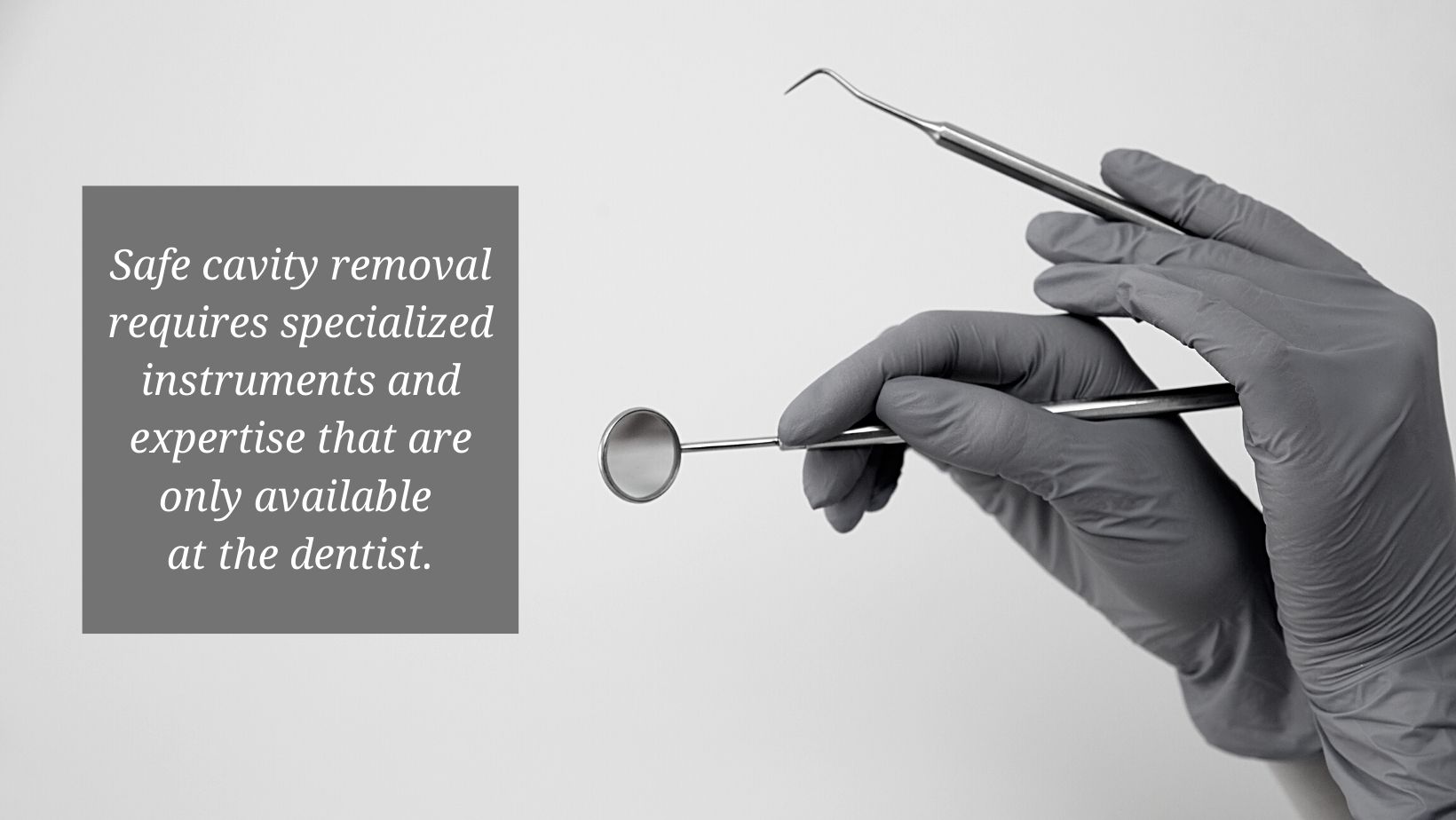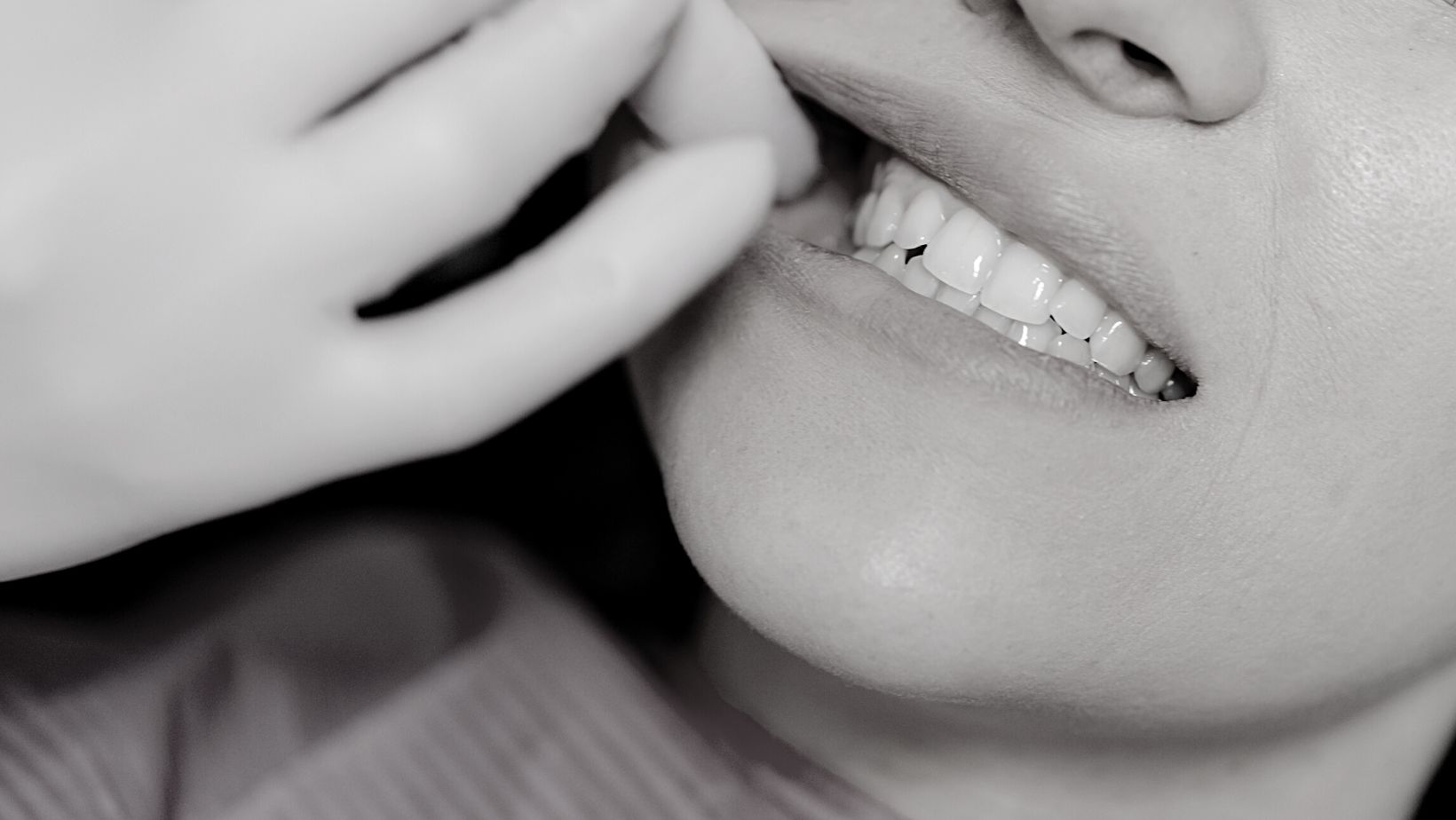It might start with a slight twinge when eating something cold or an outright toothache. Maybe a tooth has some spotting or an obvious hole. When someone first suspects a cavity, what comes next? Can the cavity be fixed at home? Unfortunately, the answer is “no.” Dental cavities are serious issues that require attention from a licensed dentist. Cavities will not heal or go away on their own, and there is no way to fix them at home.
There are many reasons people might not want to go to the dentist to fix a cavity, from fear of pain to worry about the expense. The good news is that dentists are trained to make the process comfortable and nearly pain-free. On the other hand, the longer a cavity progresses, it is more likely to cause painful toothaches. If cavities aren’t treated, they get larger and affect deeper layers of the teeth. This can lead to severe toothaches and infection.
A bad infection might then require a root canal, or even extraction (pulling) to remove the affected tooth. Untreated cavities can also lead to gum disease and bone loss. More severe cavities also cost more to treat, so early treatment at the dentist usually means less expense.
While fixing a cavity at home might sound like a good alternative, it is almost as bad as doing nothing at all for your cavity.
What is a Cavity?
Cavities, also called tooth decay or caries, are holes in the hard surface of a tooth, called the enamel. They are caused by plaque, which is a clear, sticky coating of bacteria that forms on teeth. The bacteria in plaque consume sugars and produce acid as a result. It is this acid that slowly wears away tooth enamel to cause cavities.
Cavities are very common. In fact, most adults have at least one cavity.
Signs of Cavities
What are the signs of cavities? Of course, the best way to know is to have a cavity diagnosed by a dentist. The dentist may be able to see or feel the cavity with dental instruments or may spot decay between teeth on an x-ray. Dentists are able to detect cavities in the very early stages. Often, by the time a cavity is noticeable to a patient, it has already progressed a lot.
Some common cavity warning signs are:
- Toothache
- Tooth sensitivity
- Pain when eating hot or cold items, or when biting down
- A hole in the tooth that can be seen or felt
- Black, white, or brown spots on a tooth
Why You Can’t Treat a Cavity at Home
Patients searching for home cavity fixes on the Internet may find some promising results—but unfortunately these products can provide false hope. While there are some over-the-counter dental filling products on the market, they are designed to provide temporary repairs for existing fillings that have been damaged or have fallen out. This type of product is intended to help the patient only until they can make it to the dentist for a proper filling repair. And, temporary filling repair products from the store can’t get rid of a cavity itself.
The process of fixing a cavity requires that all the decay be removed. Then, the area of the tooth that was removed needs to be sealed and restored to keep out infection and decay, and to give the patient an effective biting surface. This simply cannot be achieved using home remedies. Safe cavity removal requires specialized instruments and expertise that are only available at the dentist.

The dentist will numb the area before getting started to make sure that fixing the cavity is comfortable and pain-free for the patient. Then, the dentist uses a small drill to remove the decay.
Once the decay is removed, the dentist places a filling in the tooth. A filling is a durable, dental-grade restoration that will prevent further decay of the tooth. The two most common types of fillings are metal, called amalgam, and tooth-colored resin, called composite. The dentist will smooth and shape the filling and test that the patient can bite down comfortably.
Cost of Dental Fillings
When a cavity is detected, a patient may wonder how much a dental filling will cost. Most fillings can be done in one office visit. Amalgam fillings typically cost between $110 and $200. Composite fillings range from about $135 to $240 per filling. These estimates vary by location.
If the patient has dental insurance, the out-of-pocket cost should be much less. And, the more severe a cavity is, the more expensive the treatment. That’s why it’s important to treat cavities early or prevent them altogether.
How to Prevent Cavities
While there are no home cavity treatments, there are plenty of ways to try to avoid them in the first place. Good dental health is usually a combination of a lot of different factors and strategies. That said, good dental habits don’t always prevent all cavities. Teeth have lots of grooves and bumps and spaces for plaque to accumulate. However, practicing these habits can help with the factors patients can control in the prevention of cavities.

Brush and floss daily
The best way to avoid cavities is to avoid the buildup of plaque. Brushing is very effective for removing plaque from the surface of teeth, and flossing helps clean between the teeth. The recommendation for brushing is twice a day for two minutes. Flossing should be done at least once a day.
Use a fluoride toothpaste
Fluoride is a mineral that helps prevent cavities. It works by preventing the breakdown of enamel and reducing the acid created by bacteria in plaque. A great way to add fluoride to teeth is by using a fluoride toothpaste. Many towns also have fluoride added to drinking water to help prevent cavities.
Note: be sure to monitor fluoride toothpaste use for children and stick to the dentist’s recommendations.
Get regular dental checkups and cleanings
There are many benefits to regular dental visits. First, a dentist can find early signs of cavities and help the patient with strategies for halting the decay, such as improved brushing and flossing habits and use of a stronger fluoride treatment. If a dentist finds a cavity that requires a filling, regular visits help ensure that it will be detected in the early stages. Smaller cavities require less drilling and smaller fillings and are typically less expensive than severe decay.
Regular dental visits also involve a thorough cleaning. While everyday brushing and flossing do a lot to clean away plaque, professional dental cleanings give teeth a more thorough cleaning than is possible at home.
Dental exams and cleanings are recommended every six months or at least once a year.
Avoid sticky and sugary food and drink
Because bacteria that cause decay feed on sugary substances, it’s helpful to limit sugary drinks and foods. Sugary drinks include soda and fruit juice. Foods to limit include candy and cookies, of course, but even some sticky treats like raisins can contribute to cavities.
See a Dentist to Prevent and Treat Cavities
Cavities cannot be fixed at home. Visiting a dentist is the only way to treat cavities safely – and a great way to help prevent decay in the first place. Find a dentist nearby.


